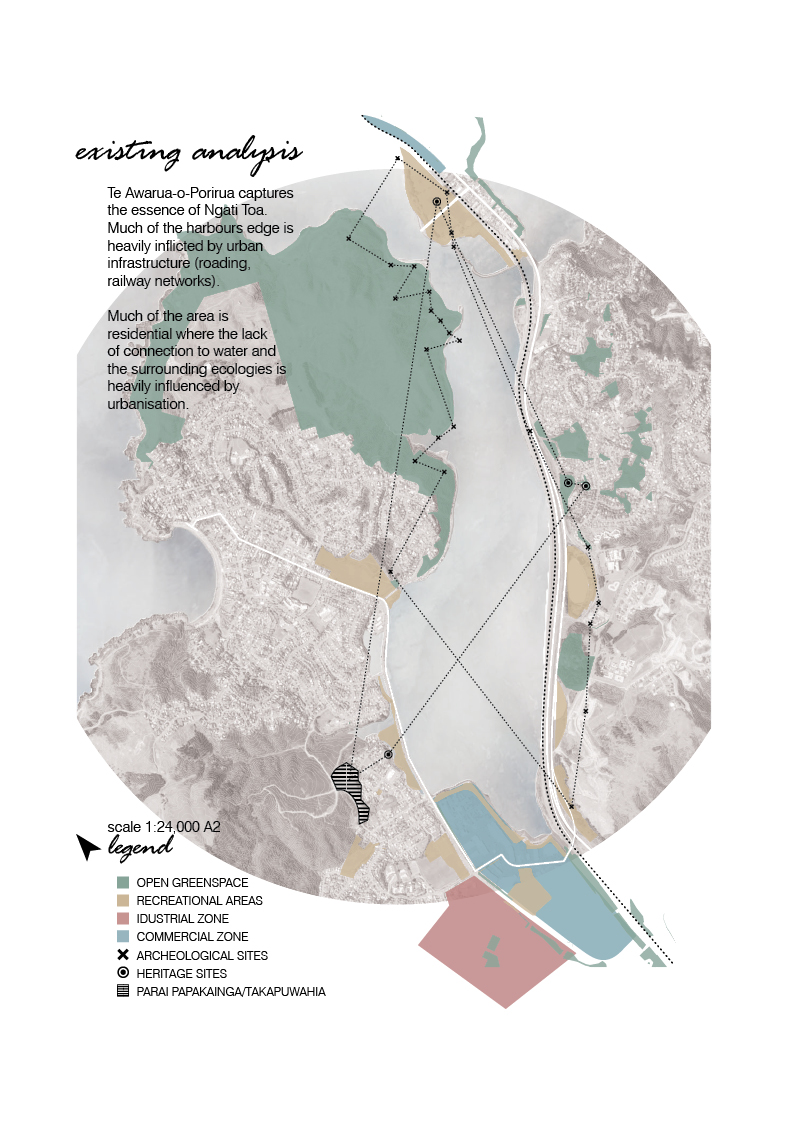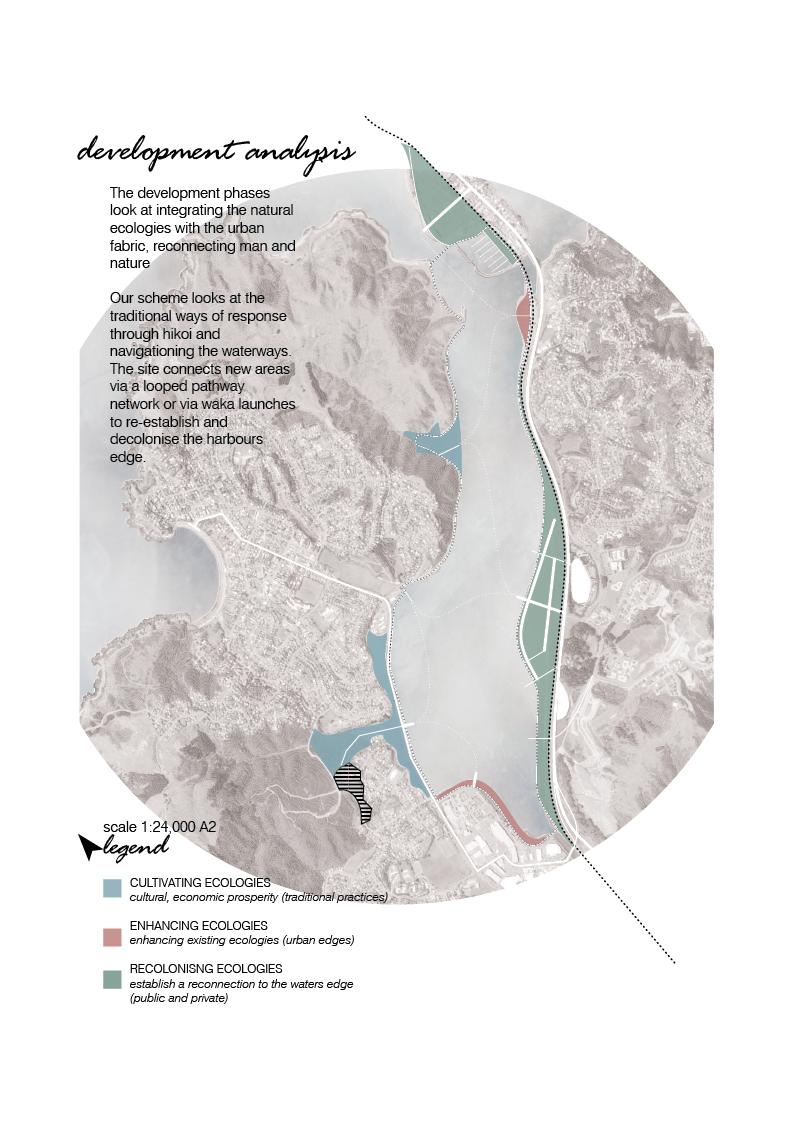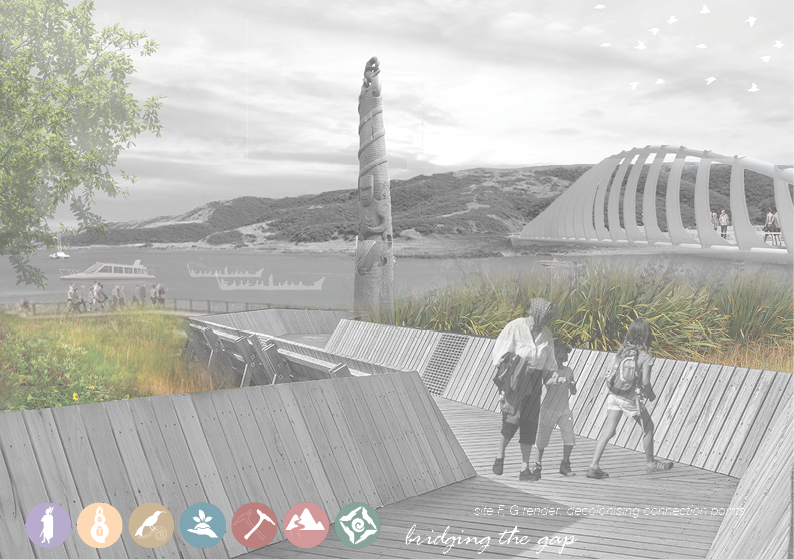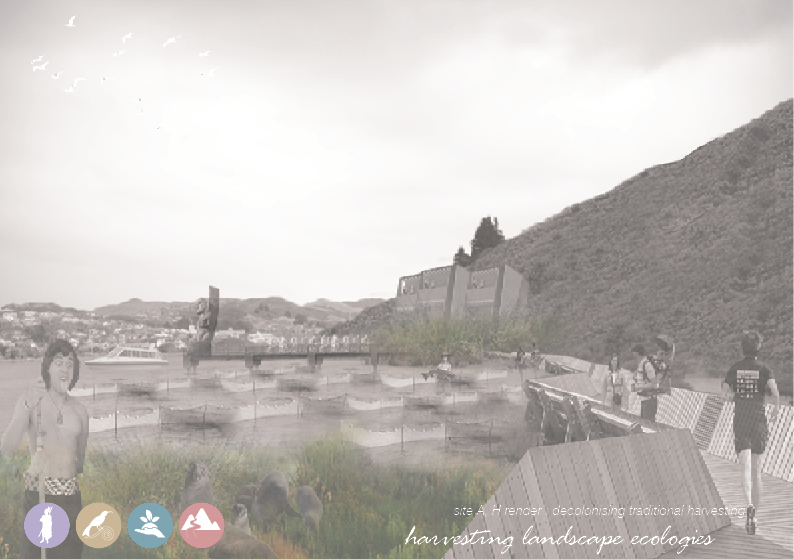Indigenous brands, Maori business, Kaupapa Growth and innovation, collaborative pilot projects, culture connection and exchange, design enabled economic, culturally enriched.
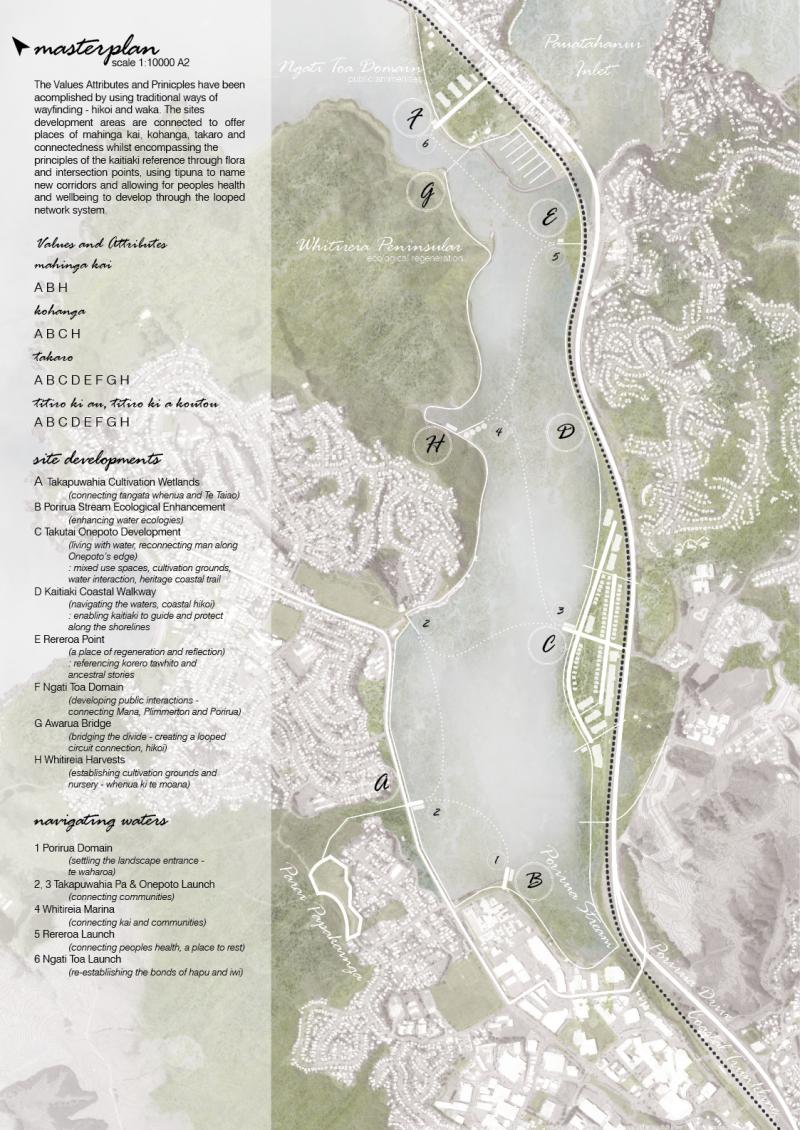
Tumahu Ipukarea: decolonising Te Awarua-o-Porirua
Toitu te marae a Tane Toitu te marae a Tangaroa Toitu te iwi This project looks into the idea of a decolonised city with respect to Porirua. This competition project looks to reverting to the past. Through understanding the cultural paradigm shift of manawhenua and Maori, our scheme harnesses the natural environment to allow for a promotion of cultural resilience within Te Awarua-o-Porirua through the traditions of hikoi and navigation of waterways.
Click on thumbnails to enlarge
Location:
Porirua
Iwi:
Ngati Toa Rangatira
Nga Aho practitioner:
William Hatton
Project participants (Nga Aho members):
Jacqueline Paul
Other participants:
Jacqueline Paul
Tumahu Ipukarea: decolonising Te Awarua-o-Porirua
The endemic landscapes of New Zealand have shaped the way Maori inhabit and view the world, forming the foundation of Maoridom by the notion of mauri (the inner connectedness of all living organisms). The surrounding environment provided a means of living and maintaining the balance of Te Taiao and Te Ao Maori in specific waterways, as these systems associated to many Maori hapu and iwi acting as a catalyst eloped in matauranga, culture, traditions, values and identity expressing the concepts of whakapapa and pepeha. Colonization of the mid 19th century saw many Maori deprived of the natural order of living, where large tracts of lands and great destruction of the natural environment. The term urban Maori has become the norm associated to about 85% of Maori living in urban areas today.
With the expansion of the wider Wellington Region, urban infrastructure is required to develop upon and stunt the increase in the wider region growth. With the implementation of Transmission Gully, diversion of state highway one will mean new prospects for these edge city communities.
Our rationale responds to the values and attributes of mahinga kai, kohanga, takaro and titiro ki au, titiro ki a koutou by referencing the ideas of traditional wayfinding through hikoi and navigating the waterways within the landscape. In relation to Porirua the Onepoto inlet provided Maori an identity through ancient stories (Te-Awarua-o-Porirua and Rereroa), kaitiaki (Mutumutu, Mukukai, Kopa and Mango), intergenerational hapu and iwi interaction, culture and sense of place and belonging. The rationale looks into connecting the past for future adaptation and evolution. Through understanding the cultural paradigm shift of manawhenua and Maori, our scheme harnesses the natural environment which promotes cultural resilience within Te Awarua-o-Porirua.

